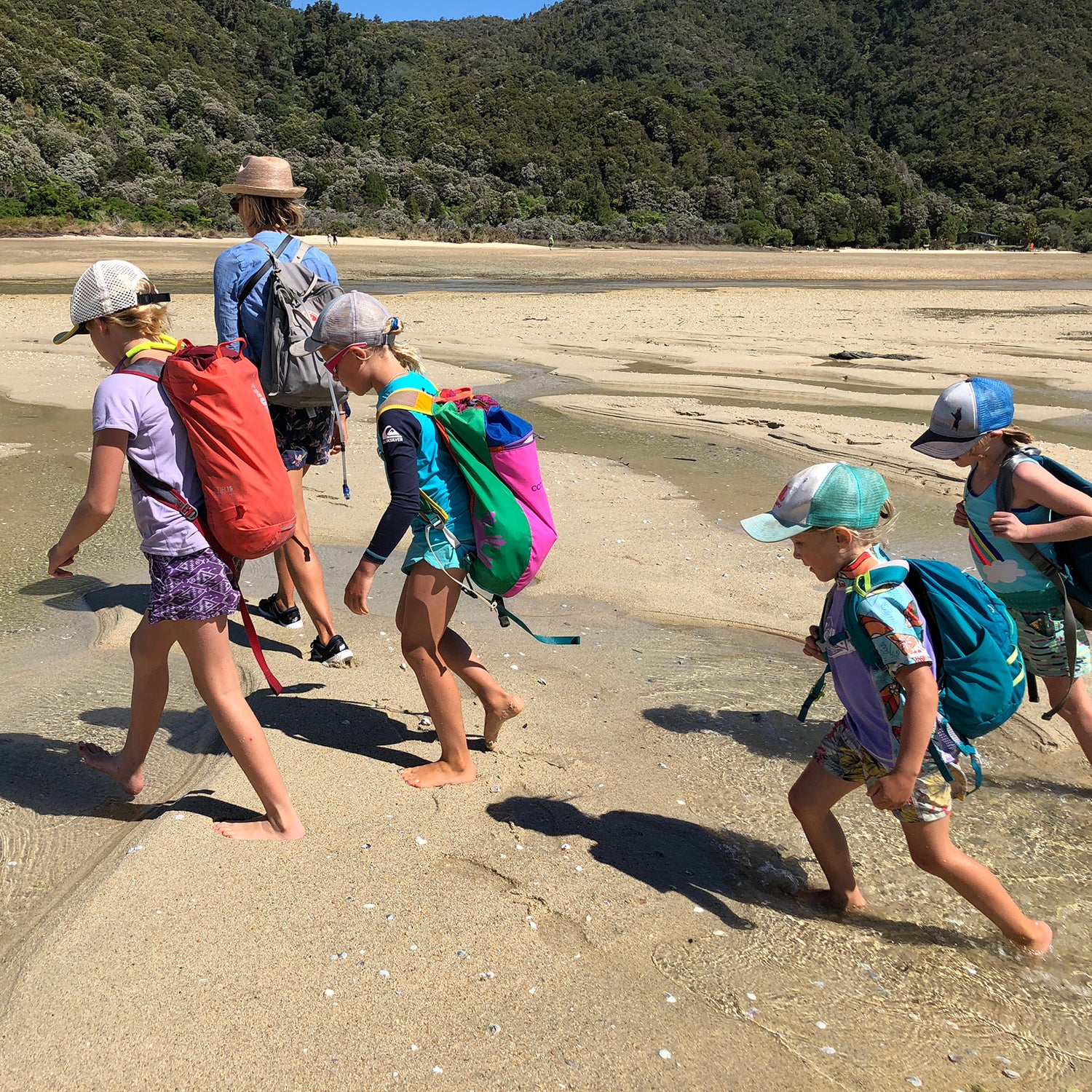Early last summer, a friend asked me if I would take her 11-year-old daughter running. There was a local 5K coming up in a few weeks, and she thought I could help coach the girl to success in her first race.
I hesitated. Her question went right to the thorny heart of modern parenting. Most children these days aren’t getting enough exercise or time to move their bodies outside. But many others are stressed out by an overdose of structured, competitive sports.
I must have looked conflicted, because my friend added enthusiastically, “It would be such good training for her!”
She wasn’t the first person to assume that because I’m a competitive outdoor athlete, I must be an aggro parent, too—a Tiger Mom of the trail set who enters her kids in gnarly races. As an ultrarunner, I’ve conditioned myself to endure and even enjoy hours of mental and physical adversity in the mountains. And my online column for ���ܳٲ������’s website, Raising Rippers, pulls straight from my experiences bringing up two daughters, now ages eight and ten, with my husband. We go rafting, take backcountry ski trips, and spend long days hiking at altitude. But there’s a big difference between helping your kids feel confident in their abilities and pushing them to compete. When our family is out hiking or riding and the girls start to fuss, I give them food and water and tell them what I tell myself during the hardest parts of an ultra: You’re stronger than you think you are, keep going. Yet I’ve never tried to make them racers.
This is due mostly to my own path into sports. When I was seven and my sister, Meg, was ten, our dad suggested on a whim that we run a 10K. The idea was so outlandish, the mileage so meaningless, it seemed like a joke. We weren’t runners, except in the way that most little kids in the late seventies were runners: we circled the bases during kickball, and I ran like hell to get away from the boy next door when he tried to smash snowballs into my face. Dad wasn’t a runner, either. He preferred long bicycle rides in his khaki short shorts and Tretorn sneakers, or rambles around the woods with his camera.
It took Meg and me close to two hours to jog, then limp, and finally stagger through the course. When at last we saw Dad waiting for us, I was filled with such a surge of relief that I broke into a sprint. We probably came in dead last, but it didn’t matter. I’d felt the strange, buzzing euphoria of sticking with something that seemed impossible. I was hooked.
I ran the same 10K nearly every spring after that, not because Dad asked me to but because I wanted to. I got faster and sometimes won my age group (and, in my thirties and forties, the women’s division outright). Still, I didn’t join the track or cross-country team like Meg did. I just ran out the door clutching my yellow Sony Sports Walkman, blasting Bananarama. This was before kids’ soccer leagues started at age three, before six-year-olds raced triathlons, before someone invented a world championship of balance biking for toddlers. Before childhood itself became a competitive sport.
Sometimes I wonder what might have happened if my parents had pressured me to compete. Maybe I would have run in college or gone further in the sport. But I’m pretty sure I wouldn’t be racing ultramarathons in my mid-forties. As a girl, I ran because I felt free, because I made up stories in my head as I went, because I loved to run. The fact that I still do is because of what psychologists call intrinsic motivation: pursuing a goal for personal fulfillment rather than external rewards. “As humans, we’re more likely to stick with tasks that arise out of our own free will and choice,” says Jessica Lahey, bestselling author of . Intrinsic motivation creates a powerful positive feedback loop: you do something because you love it, and the more you do it, the more you improve, which motivates you to keep going. Too much intensity too soon, though, can be detrimental. According to published by the American Academy of Pediatrics, children who specialize in a single competitive sport before puberty are more likely to suffer from overuse injuries and burnout. Often they quit.
My girls are bright and strong-willed, with their own ideas and dreams and a fierce determination that’s sometimes maddening but mostly a relief. They’ll surely need it to navigate the years ahead. They climb, swim, ski, run, and play lacrosse for fun and friendship. Still, I can sense the competitive fires starting to flare. Which is just fine, though I have no plans to add any fuel. Instead, I’ll steal a page from my dad’s playbook: open the door and then let them decide if they want to walk through. Above all else, I’ll keep it fun.
That was the approach I chose with my friend last summer. “OK,” I told her, “I’ll take your daughter running. But only on trails, and it won’t be ‘training’—we’ll just have a good time.”
When I showed up at the trailhead a few days later, I was met not by one girl but by her and a gaggle of 25 friends—apparently word had gotten out about our plans. It had rained heavily the night before, and the woods were sloppy with mud. We set off at an easy pace, initially trying to skirt the shin-deep puddles. But pretty soon the kids charged right in, shrieking and falling and getting back up. It looked like they’d gone crazy on a natural Slip ’n Slide.
At the turnaround about a mile and a half in, an eight-year-old boy named Johnny took off his sneakers. One by one, the other kids followed suit, laughing as they sprinted through the woods, their bare feet barely touching the ground. They weren’t running, they were just playing. As I lingered behind them, it dawned on me that after all my miles and races, this is why I still run—to feel young and free and giddy with possibility. So I kicked off my shoes and chased them all the way back to the trailhead.
Katie Arnold () is �����ԹϺ��� Online’s Raising Rippers columnist. her memoir Running Home publishes in March 2019.


